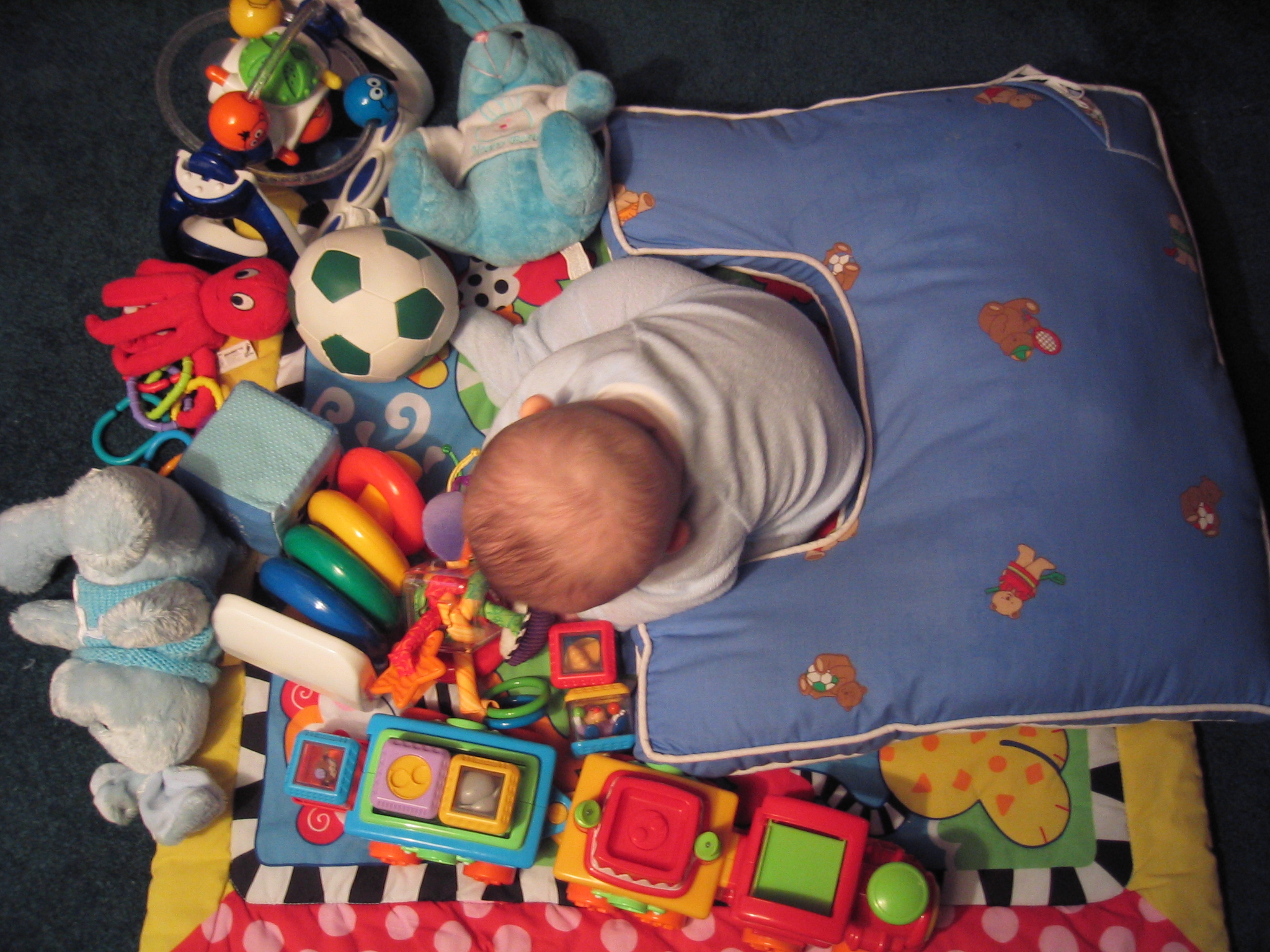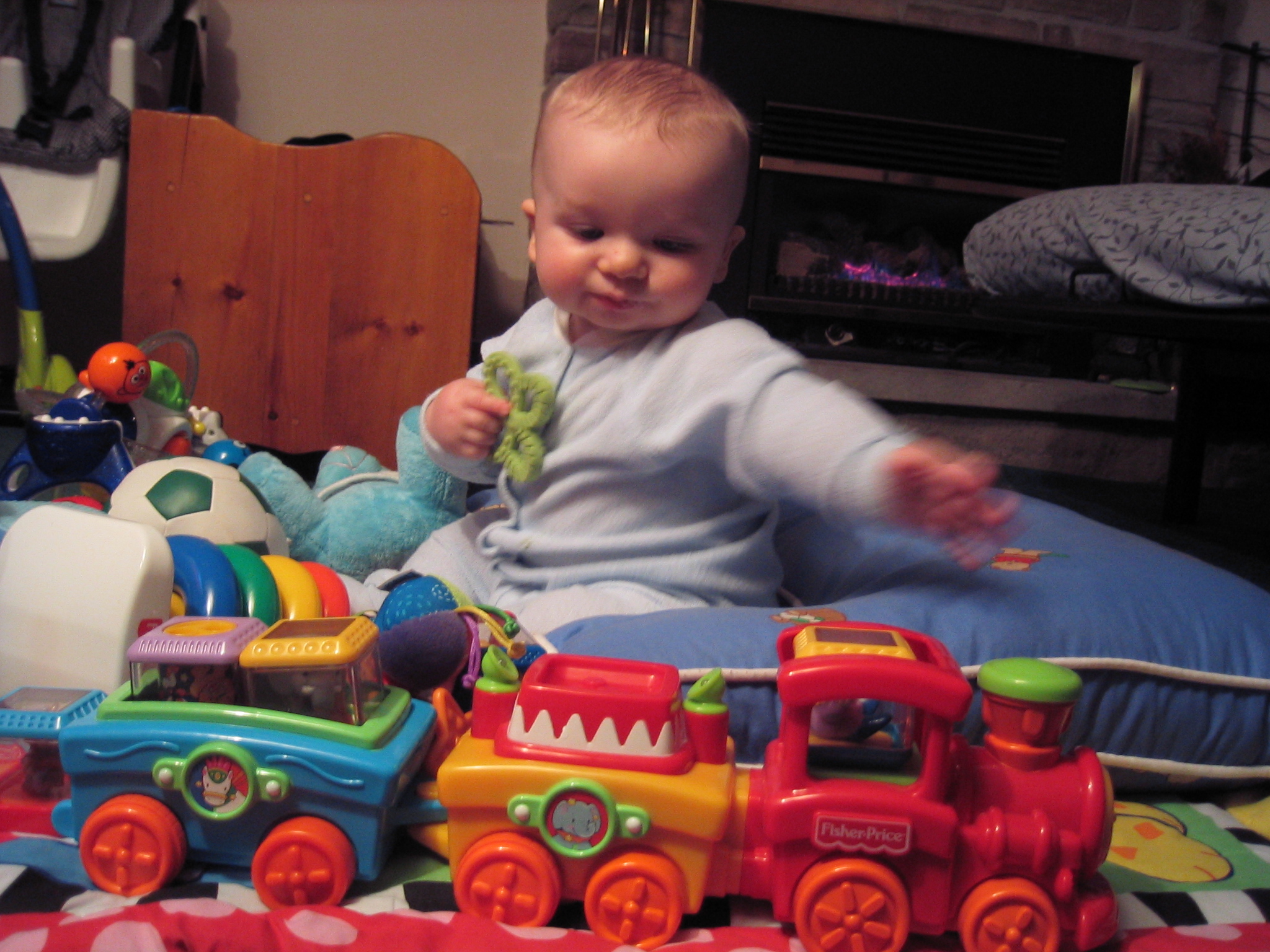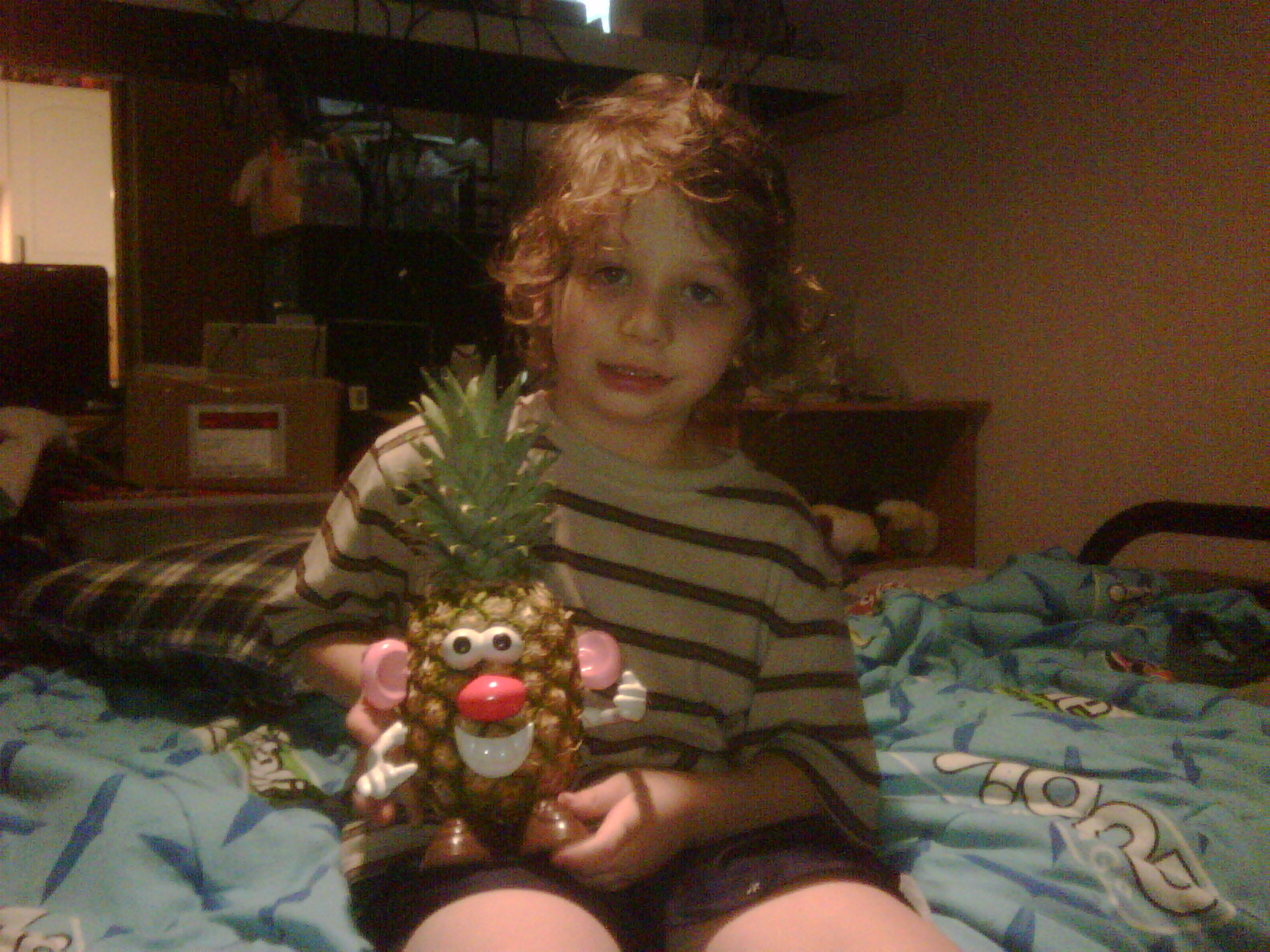Yesterday was a momentous day because George played with a train set.
Most parents would read this and wonder what the big deal is. George, after all, is a seven-year-old boy, and isn’t playing with trains a fairly typical activity for a seven-year-old boy? Well yes, except that George, as we all know, is far from typical. Because his autism makes his mind work in very different ways, he does not play with toys in the same way that other kids do. He never has: from the time he was a very tiny baby George didn’t do all of the stuff with toys that all of the books said he would.
On a side note: this is one of the reasons I know that George’s autism has absolutely nothing to do with vaccines. It might be a factor for some other kids, I’m not saying it’s not – but it isn’t for George.
Anyway, back to the toys. I remember having a slight feeling in the pit of my stomach, when George was a baby, that something was not quite right. I just knew. When he was at the age where other babies track toys with their eyes, George would stare off into the distance. When he was supposed to be batting at dangling toys with his tiny hands, he would ignore them. Unless they were shiny – then he would just stare at them. He never took an interest in teddy bears; quote-unquote “age appropriate” toys never appealed to him.
I remember once surrounding George with toys just to see if he would react to anything, to find out if something, anything, would spark an interest. For a long time, he just sat there, not even acknowledging the toys. Eventually, he reached out for the train so he could push the button to see the lights.
When George did start taking an interest in toys, it was not to play with them in any conventional sense. It was to line them up or to examine bits of them. He showed a definite preference for Lego – the straight, symmetrical lines of the pieces appealed to him. He could make perfectly straight lines with them.
Another favourite was a play table that we had picked up at a garage sale. There were all kinds of things on this table: big buttons that you could push, large beads that you pushed back and forth, little sliding window things that you would move from one side to another to reveal little pictures. At one point in its life, this table had had a toy telephone attached to it (rotary dial – just shows how old this thing must have been). By the time we got the table, the telephone was gone, but the piece of string that had attached it remained. George showed no interest whatsoever in the buttons and beads and pictures. However, he would spend hours examining that piece of string.
I think the first toy that George played with in the manner intended by the manufacturers was Mr. Potato Head. He was introduced to Mr. Potato Head by his speech therapist, and it was love at first sight. It was a wonderful tool for developing some basic speech, and it certainly didn’t hurt his play skills either. Soon we had a large collection of Mr. Potato Heads, and to this day this is a firm favourite with George. He has been using Mr. Potato Head pieces in increasingly creative ways.
Yesterday, George played with a train set. By “play” I don’t mean that he lined up the tracks without putting them together, that he made one dead-straight line of trains for each colour, or that he lay on his back minutely examining the lettering on the trains. I mean that he actually assembled the tracks (making a pretty nifty figure-of-eight to boot!), and then pushed trains back and forth on the tracks. He was absorbed in his play for some time, and on a couple of occasions he even made choo-choo noises.
For any outsider looking in, he would have looked like any seven-year-old boy playing with his trains.
But he’s not just any seven-year-old boy. He’s my George and I am so, so lucky to have him.












